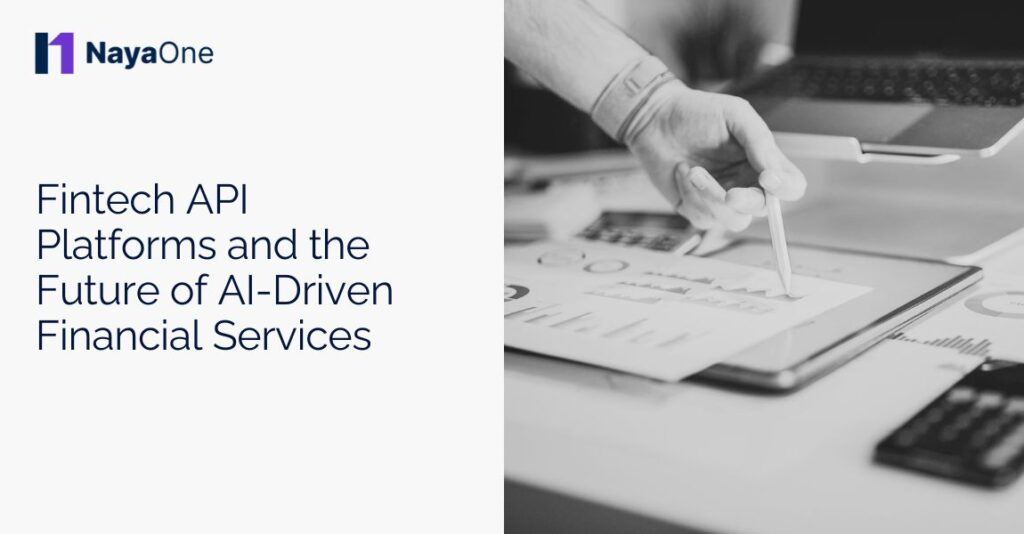Artificial intelligence has made its way into almost every corner of the financial world. From fraud detection and credit scoring to personal finance tools and trading algorithms, AI is driving a wave of transformation. But great AI doesn’t appear out of thin air. It needs quality data, access to tools, and the right environment to be tested, refined, and deployed.
That’s where the fintech API platform comes in.
More than just a bridge between systems, it acts as an innovation layer. It connects financial institutions, fintech providers, and datasets in a way that makes experimentation safer, faster, and more productive. For those looking to bring AI into real-world use, this kind of platform is starting to feel less like a convenience and more like a necessity.
So what does that journey look like? And how do these platforms actually make it easier to build and scale AI in the financial space?
What role does a fintech API platform play in AI experimentation?
Before an AI model can do anything meaningful, it needs to be tested. But in finance, testing isn’t always simple. You’re working with sensitive data, strict regulations, and complex internal systems. You can’t just plug in a new model and hope for the best.
An API platform in fintech offers a solution to that problem. It creates a controlled, secure environment where financial institutions and fintechs can run experiments without touching production systems. Through the platform, users can access synthetic datasets, simulate real‑world conditions, and evaluate performance before making any decisions about live deployment.
In fact, a global survey found there are 66 digital sandboxes related to data, AI, or tech, with 31 specifically designed to foster AI innovation, highlighting how widespread these environments have become.
This has major benefits for AI development. It removes delays caused by internal risk reviews and compliance bottlenecks. It also means institutions can explore new partnerships more freely. Instead of months of due diligence, a fintech can be tested in days. As one bank reported, introducing AI-powered sandboxes and optimized workflows led to a 25% speed improvement in delivering solutions like a branch virtual assistant.
For banks, this turns into a competitive advantage. Instead of sitting on ideas, they can prototype quickly, learn from real data, and move on if something doesn’t work. And for AI‑driven fintechs, it’s an opportunity to prove value faster and shorten the sales cycle.
How do these platforms help operationalise AI in real-world scenarios?
It’s one thing to get an AI model working in a sandbox. It’s another to get it running at scale in a bank. Systems are often fragmented, with old infrastructure sitting alongside new cloud services. Integrations are messy. And internal teams can struggle to translate proof-of-concepts into production-ready tools.
This is another area where the right platform can help.
It acts as a connector, reducing friction when moving from testing to deployment. APIs are already built to industry standards. Integrations are reusable. Fintechs and banks don’t have to start from scratch each time they want to plug something in. That means the AI model you validated last week can be onboarded and operational within a much shorter timeframe.
The platform also helps with monitoring and performance. AI doesn’t just get deployed and forgotten. It needs to be reviewed, adjusted and managed in response to new data and customer behaviour. With the right tools and orchestration layers, teams can track how a model is performing and roll out changes as needed.
All of this adds up to more than convenience. It’s about building a clear, repeatable process for taking innovation to production. And in financial services, where risk is never far away, that consistency is critical.
Can API platforms support better data access for machine learning?
Let’s talk about data. AI is only as good as the data it learns from. But in financial services, data is often locked away in silos or subject to strict access controls. Even when data sharing is allowed, the formatting and structure might be completely different between systems.
One of the key benefits of a fintech API platform is standardised data access. APIs provide a common interface, meaning developers and data scientists don’t need to work around dozens of different systems just to get the inputs they need. Whether it’s historical transaction data or real-time customer interactions, it can all be pulled in a structured, consistent format.
These platforms also open up more options for training. Instead of relying on limited internal datasets, firms can bring in anonymised or synthetic data to test models more thoroughly. This kind of approach is particularly valuable when building tools like fraud detection, where edge cases matter.
Beyond technical access, a good solution also handles things like permissions, consent and audit trails. This gives compliance teams peace of mind and ensures that AI development stays within the boundaries of regulation.
With better data access and clear governance built in, the path to strong machine learning models becomes much more practical.
How do fintech API platforms fit into the future of responsible AI?
As AI becomes more embedded in financial services, conversations around ethics, transparency, and accountability are only going to grow louder. Regulators are watching closely. Customers are asking more questions. And internal teams are under pressure to make sure their models are fair, explainable, and compliant.
In fact, a 2025 Deloitte study revealed that globally, only 13% of financial services firms are considered “ready” to implement trustworthy AI, showing a significant gap between ambition and actual preparedness.
This is where platforms like these become more than just technical tools. They support responsible AI by providing structure, oversight, and traceability.
For example, when a new model is tested through one of these environments, all steps of that process can be logged. If questions arise later, say, about why a certain decision was made or what data was used—there’s a clear audit trail. This is critical for both internal reviews and external audits.
Some platforms also build in features like model validation workflows, usage thresholds, or automated alerts. These tools help flag issues before they cause harm and ensure that high-risk models are treated with extra care.
What this adds up to is control. Financial institutions don’t just want to build AI tools; they want to build them responsibly, in a way that earns trust and stands up to scrutiny. A fintech API platform gives them the tools to do that.
Is the API platform the missing link in AI transformation?
AI has the potential to reshape financial services, no question. But without the right support, even the best models can get stuck in limbo, unable to move beyond the test phase, slowed down by legacy systems, or blocked by compliance hurdles.
A fintech API platform changes that equation. It gives institutions a safe place to experiment, the ability to scale efficiently, better access to data, and built-in governance. Whether you’re a bank looking to modernise or a fintech ecosystem trying to gain traction, the platform becomes a central piece of the puzzle.
It’s not the AI that holds most teams back. It’s the lack of structure around it. And that’s exactly what an API platform delivers.
So the real question might not be whether you need one, but how soon you can get started.





